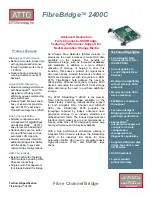
Fabric OS 5.2.x administrator guide 183
400 MP Router exceptions
The first time the 400 MP Router is powered on ports are persistently disabled. Ports will remain disabled
until they are configured otherwise.
B-Series MP Router blade (FR4-18i) exceptions
You may wish to persistently disable B-Series MP Router blade ports that are not configured so they cannot
join the fabric when the following scenarios apply:
•
You have inserted the blade into a slot that was previously empty or contained an FC4-48, FC4-32,
FC4-16, or FC4-16IP. At the time of this document’s release, HP does not support the FC4-16IP iSCSI
blade. Consult
http://www.hp.com
for the latest, updated information.
•
You have turned on the power of the chassis and the B-Series MP Router blade in that slot was not
active prior to the power-on.
If the B-Series MP Router blade is operational and the switch is rebooted, then after the successful boot up
of the system the blade will continue operations using the previous configurations.
If a previously configured B-Series MP Router blade is removed and another or the same B-Series MP Router
blade is inserted into the same slot, then the ports will use the previous configuration and come up
enabled.
If a previously-configured B-Series MP Router blade is removed and an FC4-48, FC4-32, or FC4-16 blade
is plugged in, then–other than the port’s EX_Port configuration–all the remaining port configurations
previously applied to the B-Series MP Router FC_Ports can be used. So the EX_Port configuration on those
ports will be disabled before the FC4-48, FC4-32, or FC4-16 blade becomes operational. When a blade
is present in the slot, then any requested port configuration is validated against the blade’s capabilities
before accepting the request. To summarize:
•
When an FC4-16 or FC4-32 blade is replaced by an B-Series MP Router blade, the FC configuration of
the previously configured FC_Ports will continue to be used, and all FC_Ports on the B-Series MP Router
blade will be persistently disabled.
•
When an B-Series MP Router blade is replaced by an FC4-16 or FC4-32 blade, then the EX_Port
configuration will be removed from any ports that were configured as EX_Ports (equivalent to disabling
the EX_Port configuration using the
portCfgEXPort
command). All remaining port configurations will
be retained.
FC4-48 blade exceptions
The FC4-48 blade is compatible only with the FC4 control processor blade, FC4-16/32 port blade,
B-Series MP Router, and FC4-16IP iSCSI blade.
NOTE:
At the time of this document’s release, HP does not support the FC4-16IP iSCSI blade. Consult
http://www.hp.com
for the latest, updated information.
Because the area IDs are shared with different port IDs, the FC4-48 blade only supports F, G and E_Ports.
Port swapping on an FC4-48 is supported only on ports 0–15. For the FC4-32 blade port swapping is
supported on all 32 ports. This means that if you replace an FC4-32 where a port has been swapped on
ports 16–31 with an FC4-48, the FC4-48 faults. To correct this, reinsert the FC4-32 and issue
portSwap
to restore the original area IDs to ports 16–31.
Conserving power
To conserve power and ensure that more critical components are the least affected by a power fluctuation,
you can power off components in a specified order, using the
powerOffListSet
command.
The available power is compared to the power demand to determine if there is enough power to operate.
If there is less power available than the demand, the power-off list is processed until there is enough power
for operation. By default, the processing proceeds from slot 1 to the last slot in the chassis. As power
becomes available, slots are powered up in the reverse order.
Summary of Contents for AE370A - Brocade 4Gb SAN Switch 4/12
Page 18: ...18 ...
Page 82: ...82 Managing user accounts ...
Page 102: ...102 Configuring standard security features ...
Page 126: ...126 Maintaining configurations ...
Page 198: ...198 Routing traffic ...
Page 238: ...238 Using the FC FC routing service ...
Page 260: ...260 Administering FICON fabrics ...
Page 280: ...280 Working with diagnostic features ...
Page 332: ...332 Administering Extended Fabrics ...
Page 414: ...398 Configuring the PID format ...
Page 420: ...404 Configuring interoperability mode ...
Page 426: ...410 Understanding legacy password behaviour ...
Page 442: ...426 ...
Page 444: ......
Page 447: ......
















































